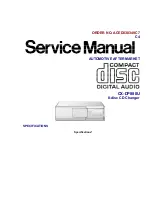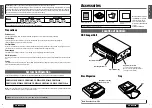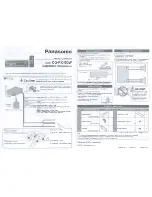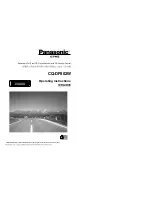
14
| English
1 609 92A 06W | (17.4.13)
Bosch Power Tools
Dust/Chip Extraction
Dusts from materials such as lead-containing coatings,
some wood types, minerals and metal can be harmful to
one’s health. Touching or breathing-in the dusts can cause
allergic reactions and/or lead to respiratory infections of
the user or bystanders.
Certain dusts, such as oak or beech dust, are considered
as carcinogenic, especially in connection with wood-treat-
ment additives (chromate, wood preservative). Materials
containing asbestos may only be worked by specialists.
– As far as possible, use a dust extraction system suita-
ble for the material.
– Provide for good ventilation of the working place.
– It is recommended to wear a P2 filter-class respirator.
Observe the relevant regulations in your country for the
materials to be worked.
Clean the chip ejector
1
regularly. Use a suitable tool (e.g., a
piece of wood, compressed air, etc.) to clean a clogged chip
ejector.
Do not reach into the saw dust ejector with your hands.
They could be injured by rotating parts.
To ensure optimum extraction of dust/chips, always work
with external dust extraction or a chip/dust bag.
External Dust Extraction (see figure C)
An extraction hose (Ø 35 mm)
15
(accessory), can be at-
tached on either side of the chip ejector.
Connect the vacuum hose
15
to a vacuum cleaner (accesso-
ry). An overview for connecting to various vacuum cleaners
can be found at the end of this manual.
The vacuum cleaner must be suitable for the material being
worked.
When vacuuming dry dust that is especially detrimental to
health or carcinogenic, use a special vacuum cleaner.
Integrated Dust Extraction (see figure C)
A chip/dust bag (accessory)
16
can be used for smaller jobs.
Insert the sleeve of the chip/dust bag firmly into the chip ejec-
tor
1
. Empty the chip/dust bag
16
at regulary intervals to
maintain optimum dust collection.
Choice of Chip Ejector Side
With the selector lever
4
, the chip ejector
1
can be switched
to right or left. Always press the selector lever
4
until it engag-
es in the end position. The selected ejection direction is indi-
cated by an arrow symbol on the selector lever
4
.
Operation
Operating Modes
Adjusting the Planing Depth
With the adjustment knob
2
, the planing depth can be adjust-
ed variably from 0–2,0 mm using the planing depth scale
3
(scale graduation = 0.1 mm).
Park Rest (see figure G)
The park rest
25
allows the machine to be set down directly
after operation, without danger of damaging the working sur-
face or the planer blade. While planing, the park rest
25
is tilt-
ed upwards thus enabling full contact of the rear part of the
planer base plate
8
.
Note:
The park rest
25
may not be removed.
Starting Operation
Observe correct mains voltage! The voltage of the pow-
er source must agree with the voltage specified on the
nameplate of the machine. Power tools marked with
230 V can also be operated with 220 V.
Switching On and Off
To save energy, only switch the power tool on when using it.
To
start
the machine,
first
push the lock-off button for the
On/Off switch
6
and
then
press the On/Off switch
5
and keep
it pressed.
To
switch off
the machine, release the On/Off switch
5
.
Note:
For safety reasons, the On/Off switch
5
cannot be
locked; it must remain pressed during the entire operation.
To save energy, only switch the power tool on when using it.
Working Advice
Planing (see figure G)
Set the required planing depth and place the front part of the
planer base plate
8
against the workpiece.
Before any work on the machine itself, pull the mains
plug.
Apply the machine to the workpiece only when
switched on.
Otherwise there is danger of kickback when
the cutting tool jams in the workpiece.
Switch the machine on and guide the machine with even feed
over the surface to be planed.
To achieve high-grade surfaces, work only with low feed and
apply pressure on the centre of the planer base plate.
When machining hard materials (e.g. hardwood) as well as
when utilising the maximum planer width, set only low planing
depths and reduce planer feed, as required.
Excessive feed reduces the surface quality and can lead to
rapid clogging of the chip ejector.
Only sharp blades achieve good cutting capacity and give the
machine longer life.
The integrated park rest
25
also allows for continued planing
at any given location on the workpiece after an interruption:
– With the park rest folded down, place the machine on the
location of the workpiece where the planing is to be contin-
ued.
– Switch on the machine.
– Apply the supporting pressure onto the front part of the
planer base plate and slowly push the machine forward
(
). This tilts the park rest upward (
) so that the rear
part of the planer base plate faces on the workpiece again.
– Guide the machine over the surface to be planed (
) with
even feed.
OBJ_BUCH-631-005.book Page 14 Wednesday, April 17, 2013 9:23 AM















































